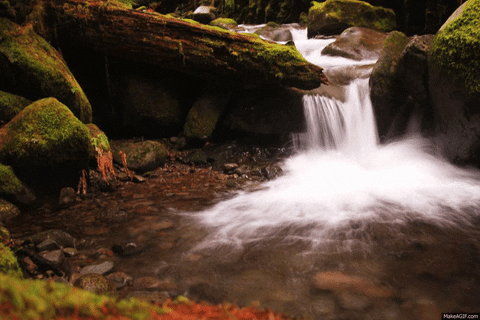Forest Bathing: How & Why You Should Do it, Especially In The Winter

Forest bathing, or shinrin yoku, is a therapeutic practice that originated in Japan in the 1980s and is now being utilized stateside for its wellness benefits. The idea is essentially to just be in nature, absorbing its light, sounds, colors, and smells. This seems simple. We’re overworked, over-caffeinated, and under-apricated (I looked up nature words and “apricate” means to bask in the sun – like a cat!). The average American spends over 90% of their day away from nature, according to a 2001 study done by the EPA. So while spending more time in nature and less time on your phone scrolling through old emails to which you “forgot to respond,” seems commonsense from a wellness perspective, there is scientific evidence to back its health claims.
SCIENCE!
- There are several studies that show that forest bathing for at least 20 minutes can lead to lower levels of the stress hormone cortisol, lower overall heart rate, lower blood pressure, as well as increased parasympathetic (rest and digest) nerve activity and decreased sympathetic (fight or flight) nerve activity. (1)
- A study performed by Stanford University has shown that nature may act as a buffer against anxiety and depression. Their study showed that subjects who walked for 90 minutes in a rural area had substantially lower activity in the part of their brain that is linked to anxiety and depression – the subgenual prefrontal cortex. (2)
- Each plant contains certain volatile oils, which are responsible for their scents, that have been shown to increase Natural Killer cell activity in humans. Natural Killer cells are white blood cells that are largely responsible for the host-rejection of both tumors and virally infected cells. (3) Plants release these volatile oils through the process of natural gas exchange when their pores, called stomata, open. Most stomata open early in the morning and close at dusk. Thus, the beneficial effects of the volatile oils released by plant leaves are increased in the morning hours.

How to Forest Bathe:
- Make forest bathing part of your weekly schedule. If you can do it more often, great! But at least once a week make the time to immerse yourself in nature.
- Try to leave behind your phone. I totally understand if this doesn’t work for you for safety reasons. If that’s the case, make a promise to yourself that this time is blocked off for you. Your calls, texts, emails, and pictures can wait. This isn’t a walk for social media opportunities. It’s a gift you’re giving yourself.
- Use your 5 senses. Stop every so often to engage all of your senses and see what you can see, smell, hear, etc.
- Meander and choose paths that seem interesting to you in that moment. The end isn’t the main goal here – healing and relaxation are.
- If you have the chance, take your shoes off and feel the ground below you. We don’t often get the chance to feel the earth on our bare feet.

Why is this so important in the winter?
It’s just as important to forest bathe in the winter as it is in the summer. Being in nature in the winter months may actually have increased therapeutic benefits. This is because tapping into the natural rhythms of the winter is an important part of the cyclical hibernation process your body goes through every year.
- Being in nature emphasizes the quiet essence of winter. It’s a whole season dedicated to resting and reflecting. It’s an important process for the body to experience and it helps soothe and quiet the mind.
- Moving from high levels of sympathetic nerve activity into more of a parasympathetic response system, allows your body to relax and recuperate, which gives your immune system a bit of support.
- A study done in Japan showed that forest bathing for two hours dramatically reduces dopamine and cortisol levels, aiding in relaxation, while also improving sleep quality.4 Additionally, mindful breathing during a forest bathing excursion reinvigorates your body and fights fatigue. Less stress + increased energy + better sleep = win-win-win!

Works Cited
1. Park BJ, Tsunetsugu Y, Kasetani T, Kagawa T, Miyazaki Y. The physiological effects of Shinrin-yoku (taking in the forest atmosphere or forest bathing): evidence from field experiments in 24 forests across Japan. Environ Health Prev Med. 2010;15(1):18-26. doi:10.1007/s12199-009-0086-9
2. University S. Stanford researchers find mental health prescription: Nature. Stanford News. https://news.stanford.edu/2015/06/30/hiking-mental-health-063015/. Published June 30, 2015. Accessed December 16, 2019.
3. Poulsen DV, Stigsdotter UK, Djernis D, Sidenius U. ‘Everything just seems much more right in nature’: How veterans with post-traumatic stress disorder experience nature-based activities in a forest therapy garden. Health Psychol Open. 2016;3(1). doi:10.1177/2055102916637090
4. Kawada T, Li Q, itoh-nakadai A, et al. Effect of forest bathing on sleep and physical activity. For Med. January 2013:105-109.
